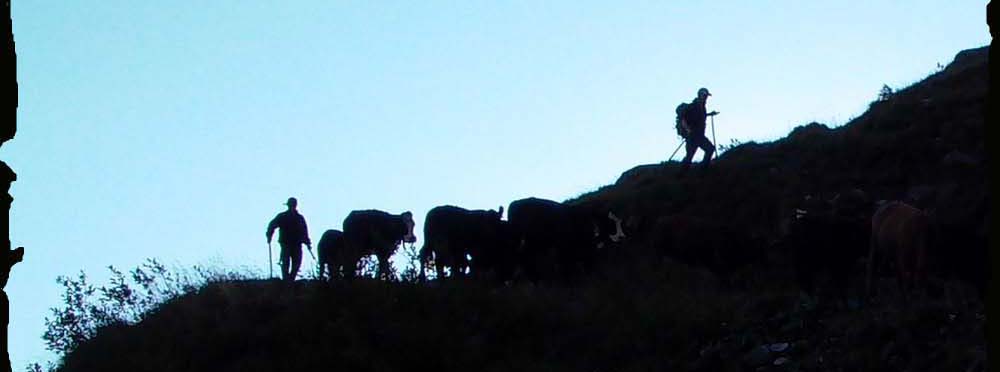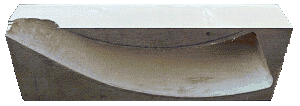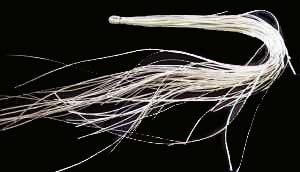|
|
Home | Contacts | Links |
|
 |
 |
|
Alpine horn crafting |
| I hope these few lines
will help to quench your thirst to know more about this renowned
instrument which expresses the mountain spirit so well. The deep vibrations of the horn are often used to play simple music, such as at a country fair, or alone, singing out in a vast space untouched by the din of mankind. Its sound is always in harmony with the moment, the here and now, and the necessities and pleasures of alpine life. The alpine horn and Trombobüchel (a shorter version) are wind instruments in which a column of air is set into vibration. Most often it is played in the keys of F sharp or F, but there are also instruments in the keys of C, D sharp, B and so on. The shorter the alpine horn, the more difficult it is to play. Without finger buttons or piston valves, it can only emit simple sounds produced by lip vibration at the mouthpiece, carried by the air column in the horn, 340 cm long in F sharp. Mastery of the instrument
therefore lies in lip manipulation, which produces melodic sounds
from the column of air. Full vibration of the column of air produces
the base note. A dual vibration will produce the same note an octave
above, and so on. Sounds produced in this way are called natural
sounds. The alpine horn is able to resonate across an entire alpine
valley: it can be heard up to 8km (5 miles) away. As the horn player
only has access to natural sounds, he is not able to play all
melodies. |
|
|
|
It It is a
pastoral instrument. In prehistoric times, travelling
herdsmen brought them from central Asia into the mountains
of Europe. From Iceland to the Pyrenees, from Vosges to the
Alps and as far as the Carpathians, from Scandanavia to
central Africa, South America and Australia, the herdsmen’s
horn is heard almost everywhere throughout the world. According to a Roman mosaic in Boscéaz, near Orbe, the Helvetii people played the instrument some two thousand years ago. Incidentally, in 1661, a travelling herdsman from Eggiwil was prosecuted for causing a night-time disturbance by playing the alpine horn. In Entlebuch in 1653, its calls signalled the rallying of the peasant revolt. In the 17th century, travelling alpine horn players would busk for their food in towns. In the 18th century, increasing repression of popular culture led to the instrument being increasingly neglected. However, since the end of the 18th century the fashion for travelling and the growing attraction of alpine holidays sparked numerous mentions of the horn in travel journals. Jean-Jacques Rousseau introduced the instrument to all of Europe when he talked of its dramatic effects on the morale of Swiss soldiers serving abroad: ‘the celebrated rows of cattle…so cherished amongst the Swiss that playing it amongst their troops was prohibited under sentence of death, because it caused he who heard it to break down in tears, to desert, or to die’. Although this practice is still sometimes used to this day, a ‘preformed’ trunk of red fir tree was at one time chosen for crafting the famous horn. This curved form is due to the fir tree being bent under the weight of snow falling on terrain on steep slopes when it is young, causing it to retain this form at its base as it grows. Once felled, it is left to rest for a long time to allow its wood to dry out. Then it will be carved using an adze, chisel, plane and other tools. These horns were either in one piece or in two separate parts only, as opposed to the three pieces the alpine horn is most frequently made up of today. |
|
Here is the story of how an alpine horn is crafted today. |





